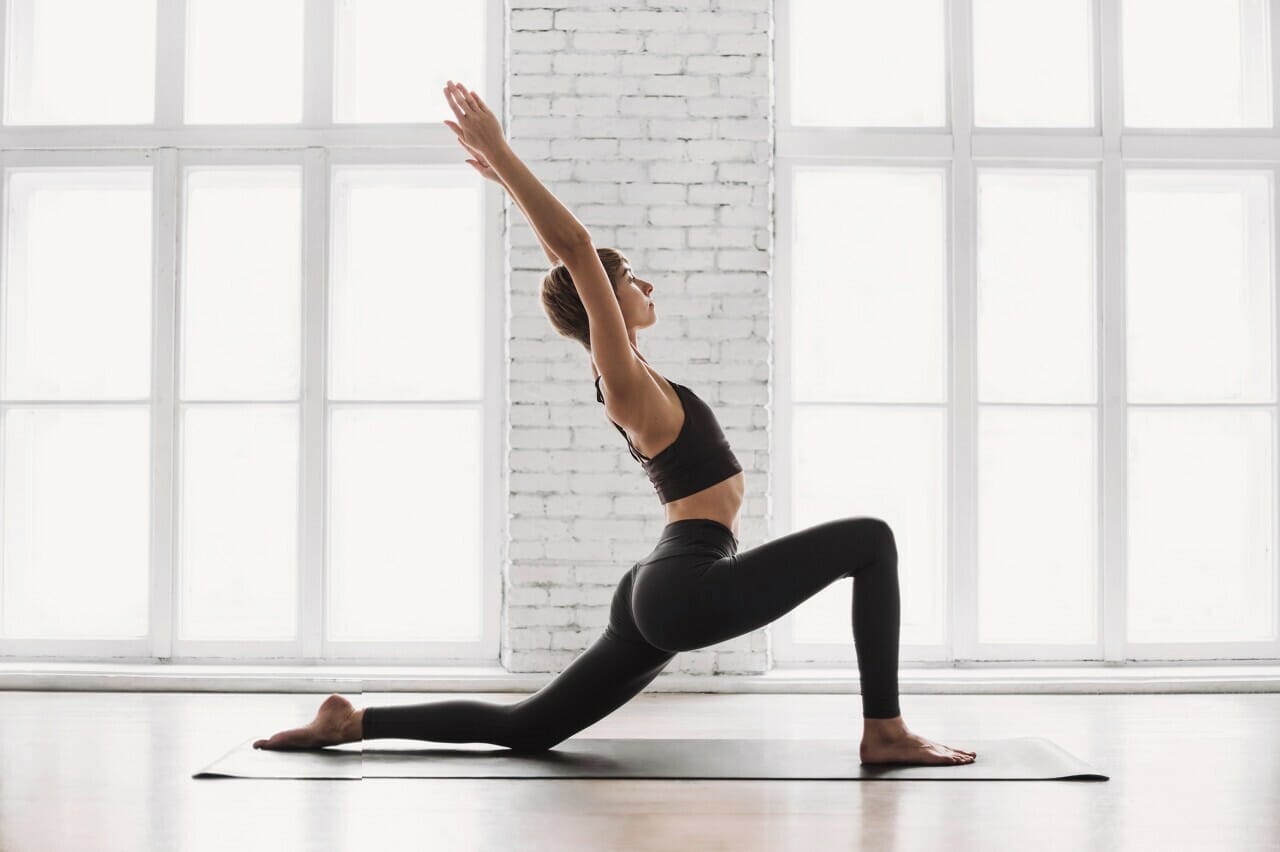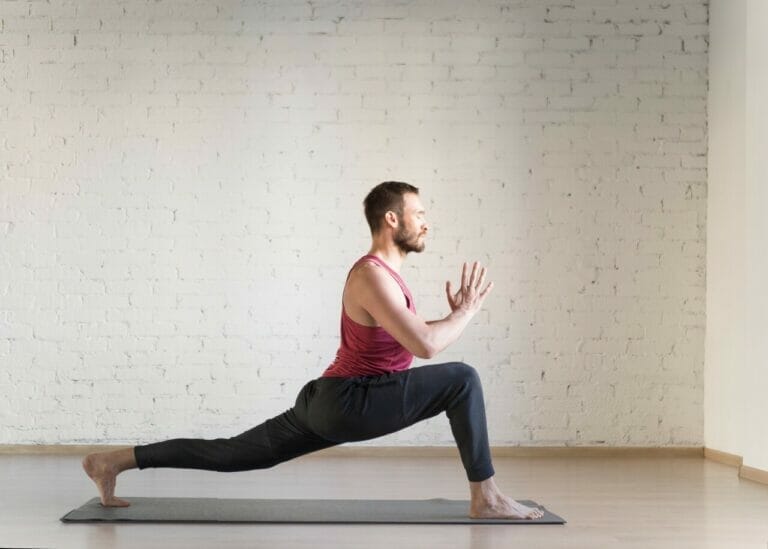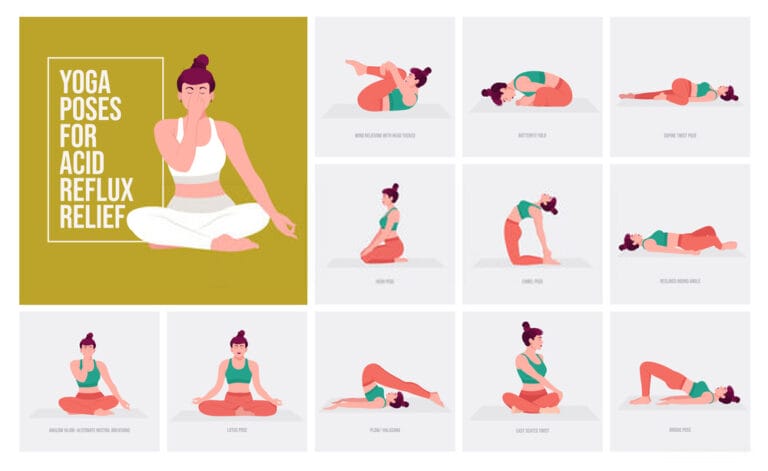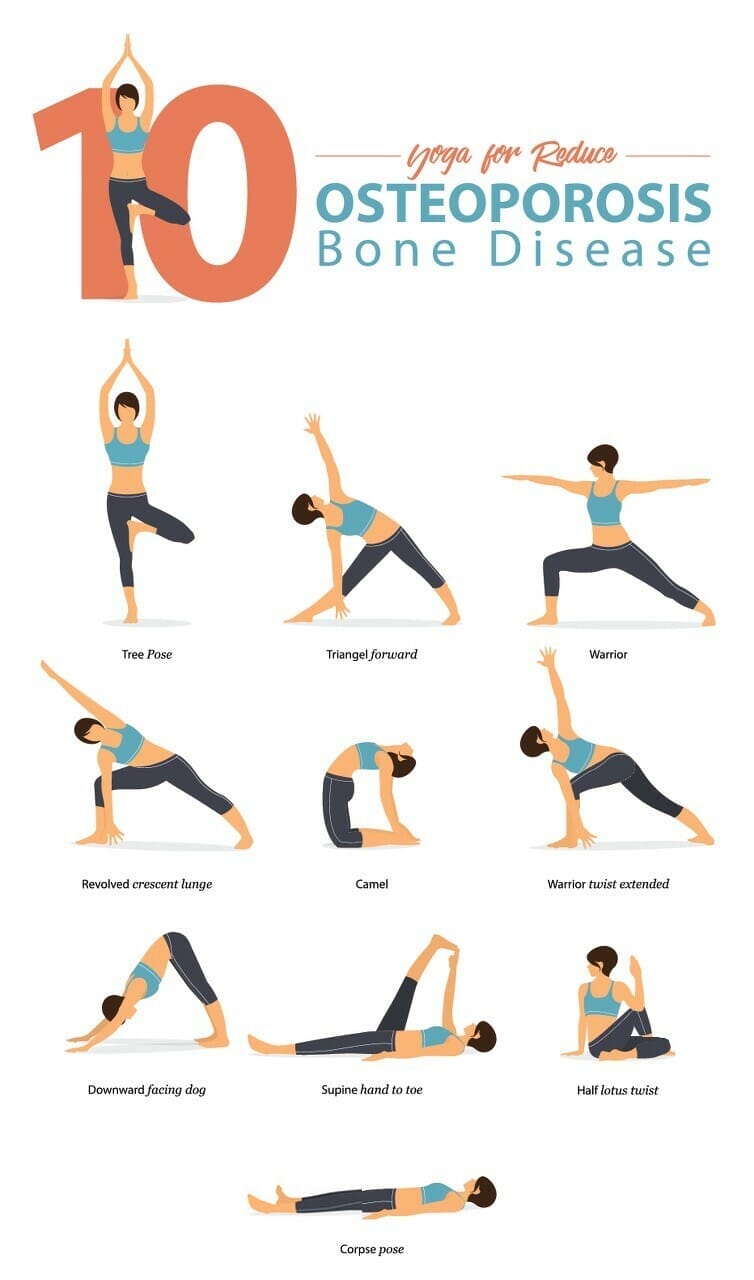Get Relief From Ibs With These Yoga Poses
Going to an exercise class may be the last thing on your mind when your stomach is rumbling with IBS. However, you may be surprised to find that moderate activities such as yoga can assist with IBS symptoms.
Yoga is an attractive option to pursue if you have IBS since it may help you reduce your stress levels.
However, it's also not an aerobic workout, so you won't be leaping around and jarring your intestines. Aside from that, specific positions might help reduce IBS symptoms such as gas and bloating.
What is IBS?
Irritable bowel syndrome, or IBS, is a condition that causes abdominal pain and discomfort from time to time. The pain can be mild to severe and can vary from day today.
One of the main reasons IBS is so common is that adults are too used to regular bowel movements. If you have IBS, then your occasional bowel movements don't feel "normal" anymore.
How does yoga help in IBS?
Just like any other exercise, yoga can help lessen your overall stress levels. What’s great about yoga is that it combines stretching with muscular strength training, although it’s not considered aerobic exercise.
Yoga will also help you breathe better, while some positions will allow you to relax while still being active.
Yoga will help you to feel more in control of your body. Since you’ll be engaging your mind and body to work together, there’s a sense of flow that you can experience from yoga.
n addition, if you have IBS, then yoga can help you relax from time to time to lessen the pain caused by the condition.
Yoga asanas for IBS
Half Lord of the Fishes pose
An excellent twisting position is Half Lord of the Fishes. Twists aid with detoxification and digestion—this variation aids in stimulating the liver and kidneys.
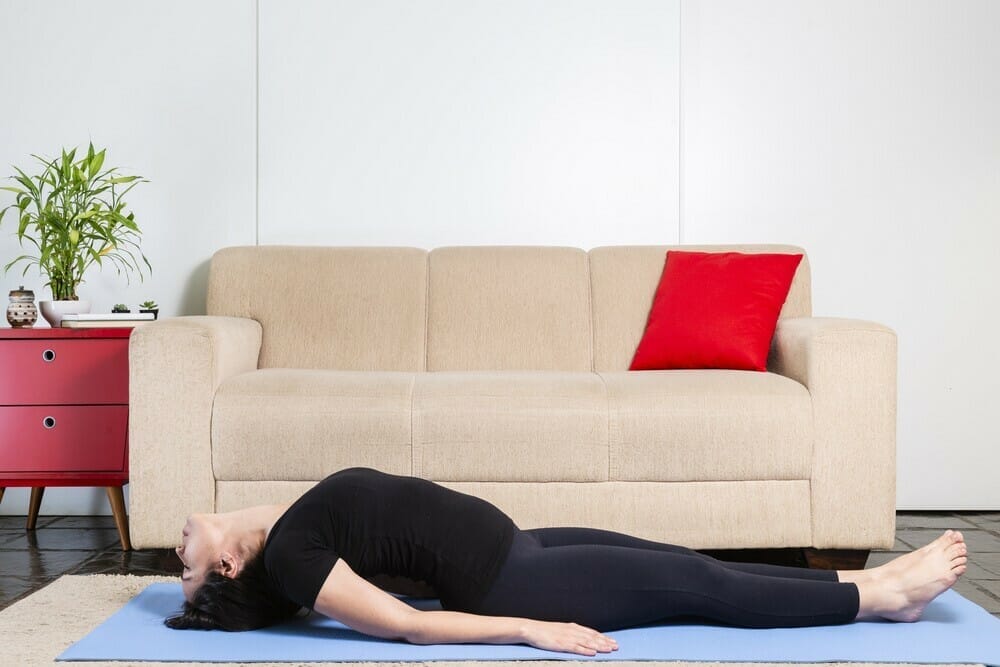
- Begin with sitting in dandasana.
- Flex your right knee to position your right foot outside your left knee.
- By bending the left knee, you may bring your left foot around the right hip.
- Inhale and raise the left arm, then exhale and rotate the body to pass it around the outside edge of the right knee.
- With the left hand, hold the right foot such that the right knee is closer to the left armpit.
- Inhale, keeping the back straight, and lift the right arm in front of you. Exhale to keep rotating to the right and looking past the right shoulder.
- Inhale and sit up, then exhale and bend your right elbow to reach the left side of your waist, wrapping your right arm over your back.
Muscles worked:
- rhomboids
- serratus anterior
- erector spinae
Wind-Relieving pose
Wind-relieving (or wind-releasing) posture is known to release gas in the intestines. Therefore, it implies that you should practice this posture right away if you’re feeling extraordinarily gassy and bloated.
And, depending on your degree of comfort with releasing gas in front of people, you may want to do it alone!
But it’s worth it, and not only for the sake of convenience. The elimination of this gas enhances the quality and efficiency of your digestive system. It can alleviate symptoms of indigestion, gas, bloating, and constipation.
- Lie down on your back, arms and legs outstretched.
- As you exhale, bring both knees to your chest, wrap your hands around them, and give them a gentle embrace.
- Keeping your right leg in place, lower your left leg to the ground and stretch it out far.
- Hold this posture while taking calm, deep breaths. Keep your leg to the side of your torso, running across your upper body.
- Bend your left knee to your chest and hug both knees again before swapping sides and letting your right leg hang down.
Muscles worked:
- hamstrings
- gluteus maximus
- deltoids, triceps
- serratus anterior
Bow pose
Another backbend is the bow position. However, this one is a little deeper. It alleviates tiredness, anxiety, and constipation.
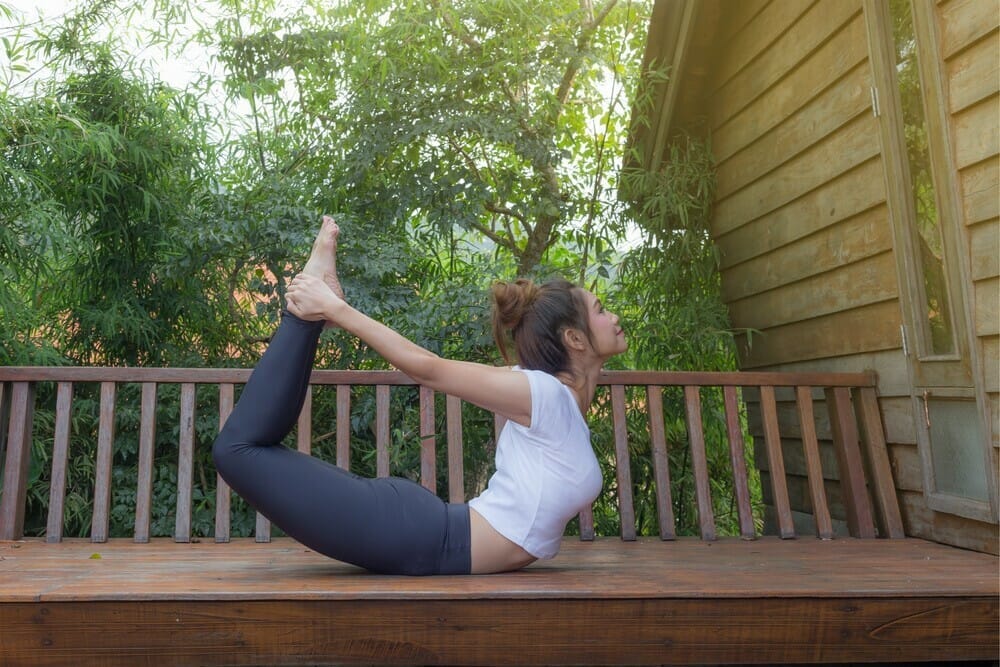
However, you may not want to maintain this posture for long if it causes your intestines to feel overly busy.
- Begin by laying down on your stomach.
- Bend your knees and use your hands to grip your ankles.
- Lift your chest off the ground by pressing your feet away from your head, ankles into your hands, knees hip-width apart.
- Take at least three deep breaths here.
Muscles worked:
- gluteus maximus
- hamstrings
- quadriceps
- pectoralis major
Cobra
Cobra pose tones the belly, relieves tension and tiredness, increases blood circulation, and stimulates the digestive organs.
- On your stomach, lie down.
- Maintain a straight line with both legs, with the soles of the feet pointing upwards and the toes linked together. Maintain a comfortable position on the floor with your forehead.
- In this situation, make sure that both your feet and heels are in contact with each other.
- Bring both of your hands’ palms beneath your shoulder and keep your elbows parallel to the ground.
- Take a deep breath, support with both hands, elevate the head, then the neck, then the chest, and finally the stomach once you’ve arrived at this posture.
- Continue to breathe until you can curl your back.
Muscles worked:
- hamstrings,
- gluteus maximus
- deltoids, triceps
- serratus anterior
Downward-Facing Dog
Because it energizes the body, Downward-Facing Dog is an excellent place to start any yoga practice. In addition, Downward-Facing Dog can help with IBS by extending the spine and toning the abdominal muscles.

- Start on all fours.
- Tuck your toes and lift your hips high, aiming your sit bones at the ceiling. Return your heels to the mat without touching.
- Make your neck long by lowering your head.
- Wrist creases remain parallel to the mat’s front border. To relieve wrist strain, push against the knuckles of your fingers and thumb.
- Take at least three deep breaths here.
Muscles worked:
- hamstrings
- gluteus maximus
- deltoids
- triceps
- quadriceps
Bottom Line
Yoga is an excellent form of exercise for people with IBS. Although its effects can vary from person to person, it will give you a better sense of control over your body.
In time, you'll learn how to work with your symptoms ahead of time. Check with your doctor before starting a yoga practice. Although it's unlikely to cause harm, you should not do yoga if it aggravates your condition.
In addition, since IBS is a chronic condition, yoga may be too strenuous for you initially. If you begin to have symptoms or feel exhausted after yoga, take a break from it and focus on other forms of exercise.

